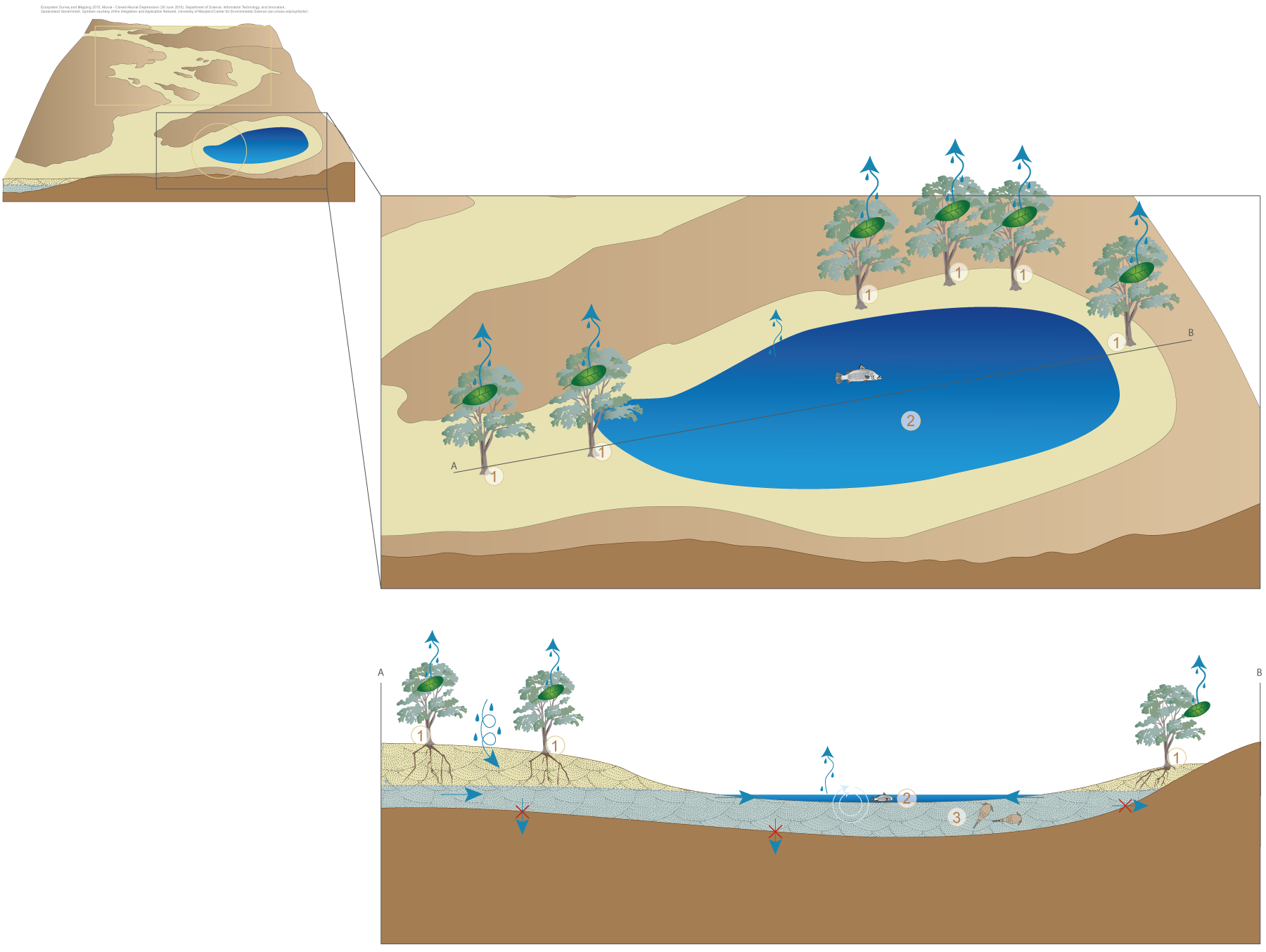|
|
Alluvia—closed drainage systemsAlluvia—closed drainage systems
Click on elements of the model or select from the tabs below Click on elements of the model or select from the tabs below Alluvial aquifers are formed from particles such as gravel, sand, silt and/or clay deposited by fluvial processes in river channels or on floodplains. These deposits store and transmit water to varying degrees through inter-granular voids. Alluvial aquifers can develop in areas where groundwater flow is constrained by the surrounding lower permeability material. In closed drainage systems alluvial aquifers are completely constrained by local geology and topography, combined with high evaporation. Therefore, groundwater and surface water is unable to continue flowing and are stored in these areas. Unconsolidated sedimentary aquifers in upper catchment areas may provide a range of ecosystems with water required to support their fauna and flora communities, ecological processes and delivery of ecosystem services.
Pictorial conceptual model PDF Additional links
Last updated: 12 April 2017 This page should be cited as: Queensland Government, Queensland (2017) Alluvia—closed drainage systems, WetlandInfo website, accessed 8 May 2025. Available at: https://wetlandinfo.des.qld.gov.au/wetlands/ecology/aquatic-ecosystems-natural/groundwater-dependent/alluvia-closed-drainage-systems/ |

 — Department of the Environment, Tourism, Science and Innovation
— Department of the Environment, Tourism, Science and Innovation

